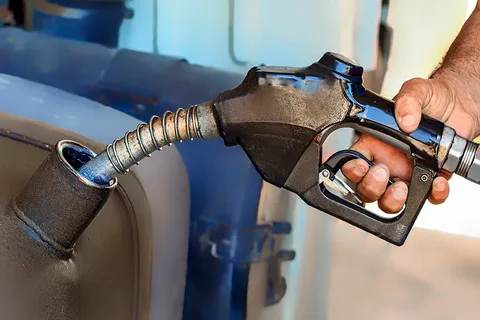Accidentally putting diesel in a petrol tank is a common mistake that can lead to severe damage to your car’s engine if not addressed properly. Misfuelling incidents like this happen more often than you’d think, especially when drivers switch between cars that use different fuels. Understanding how to fix a petrol car with diesel in the tank is crucial to prevent long-term damage and costly repairs.
Immediate Steps After Misfuelling
When you realize that you’ve filled your petrol car with diesel, acting quickly is essential to reduce the extent of the damage. The first and most important rule is do not start the engine. If the engine is started, the diesel will circulate throughout the fuel system, increasing the chances of clogging and causing damage to sensitive engine components.
1. Don’t Start the Engine
As soon as you realize the mistake, turn off the car and remove the key from the ignition if the car has been started. Keeping the car turned off ensures that the diesel does not reach the engine components and the fuel system.
2. Inform the Fuel Station Attendant
If you’re still at the fuel station, inform the staff immediately. Many stations are equipped to help with minor car issues, and they might be able to provide some assistance or recommend a nearby mechanic who specializes in fuel drainage.
3. Arrange for a Fuel Drainage Service
To safely remove the diesel in a petrol tank, you’ll need to contact a professional fuel drainage service. They will drain the tank, flush out the fuel lines, and clean the system to ensure no diesel residue remains.
4. Do Not Attempt to Fix It Yourself
While some may suggest attempting to drain the fuel tank yourself, this is not advisable unless you’re a trained mechanic. Modern petrol cars have complex fuel systems, and without the proper tools and expertise, you could inadvertently cause more damage to the vehicle.
Understanding the Damage of Diesel in a Petrol Car
The fundamental difference between petrol and diesel lies in how each fuel type ignites within the engine. Petrol engines rely on spark plugs to ignite the fuel, whereas diesel engines rely on compression. When diesel is introduced into a petrol engine, the fuel will not combust in the same manner. Instead, diesel is heavier and oilier, which can clog fuel injectors, cause misfires, and damage other components of the engine.
1. Damage to Fuel Injectors and Fuel Lines
Diesel is much thicker than petrol and does not evaporate as quickly. As a result, it tends to coat the fuel injectors and fuel lines with a sticky residue. This residue can clog up these parts, leading to misfires or even complete engine failure.
2. Impact on Catalytic Converter
The catalytic converter is another key component that is sensitive to fuel quality. The diesel in a petrol tank can damage the catalytic converter, an expensive part to replace. Once diesel gets into the system, it doesn’t burn off properly, and over time, it can clog and damage this critical component.
3. Spark Plug Issues
Diesel doesn’t ignite as easily as petrol, which means the spark plugs may become ineffective. This can lead to incomplete combustion and poor engine performance, causing the engine to stall or run inefficiently.
How to Properly Fix Your Petrol Car After Diesel Misfuelling
Once the fuel drainage service has removed the contaminated diesel, the following steps should be taken to fully restore the vehicle:
1. Fuel System Flush
After draining the diesel, a comprehensive flush of the fuel system is necessary. This step ensures that no residual diesel remains in the lines, injectors, or tank. A qualified mechanic will typically perform this using specialized cleaning solutions.
2. Replace Fuel Filters
In many cases, after diesel has been in a petrol tank, the fuel filters will need to be replaced. Diesel can clog these filters, and replacing them is an inexpensive way to ensure that your car runs smoothly after the fuel drain.
3. Check Spark Plugs and Fuel Injectors
The spark plugs and fuel injectors may need cleaning or replacement depending on the extent of the contamination. Diesel can leave residue that prevents these components from functioning correctly, and thorough cleaning will be required.
4. Inspect the Catalytic Converter
After the car has been flushed and cleaned, it’s important to inspect the catalytic converter for signs of damage. If diesel has caused the catalytic converter to become clogged or damaged, it may need to be replaced.
Prevention Tips for Future Misfuelling Incidents
Preventing future misfuelling mistakes is easier than fixing the problem. Here are a few simple steps to reduce the likelihood of putting diesel in a petrol tank:
1. Use Fuel Cap Labels
Place a clear label on the fuel cap or near the fuel tank that indicates the type of fuel the car requires. This small reminder can help when driving different cars or when distracted at the fuel pump.
2. Double-Check the Nozzle
Before filling up your car, take a moment to double-check the nozzle and ensure it matches your car’s fuel type. Diesel nozzles are often larger than petrol nozzles, but it’s still possible to make a mistake in a hurry.
3. Familiarize Yourself with the Car
If you’re driving a rental or borrowing someone else’s car, take a moment to familiarize yourself with the fuel type. Many drivers make the mistake of assuming all cars use the same fuel type as their personal vehicle.
When to Call a Professional
If you’ve already started the engine after putting diesel in your petrol car, the situation becomes more serious, and professional help is required. Driving even a short distance with the wrong fuel can cause significant damage. A professional mechanic will be able to assess the extent of the damage and recommend whether more extensive repairs are needed.
Conclusion
Fixing a petrol car that has been filled with diesel requires immediate action and professional intervention. Acting quickly to drain the diesel and flush the fuel system will minimize the damage. However, prevention is always better than a cure. By being cautious and mindful at the fuel pump, you can avoid this costly mistake in the future.
 Diverse Perspectives: Insights & Stories Exploring Ideas, Sharing Knowledge
Diverse Perspectives: Insights & Stories Exploring Ideas, Sharing Knowledge





